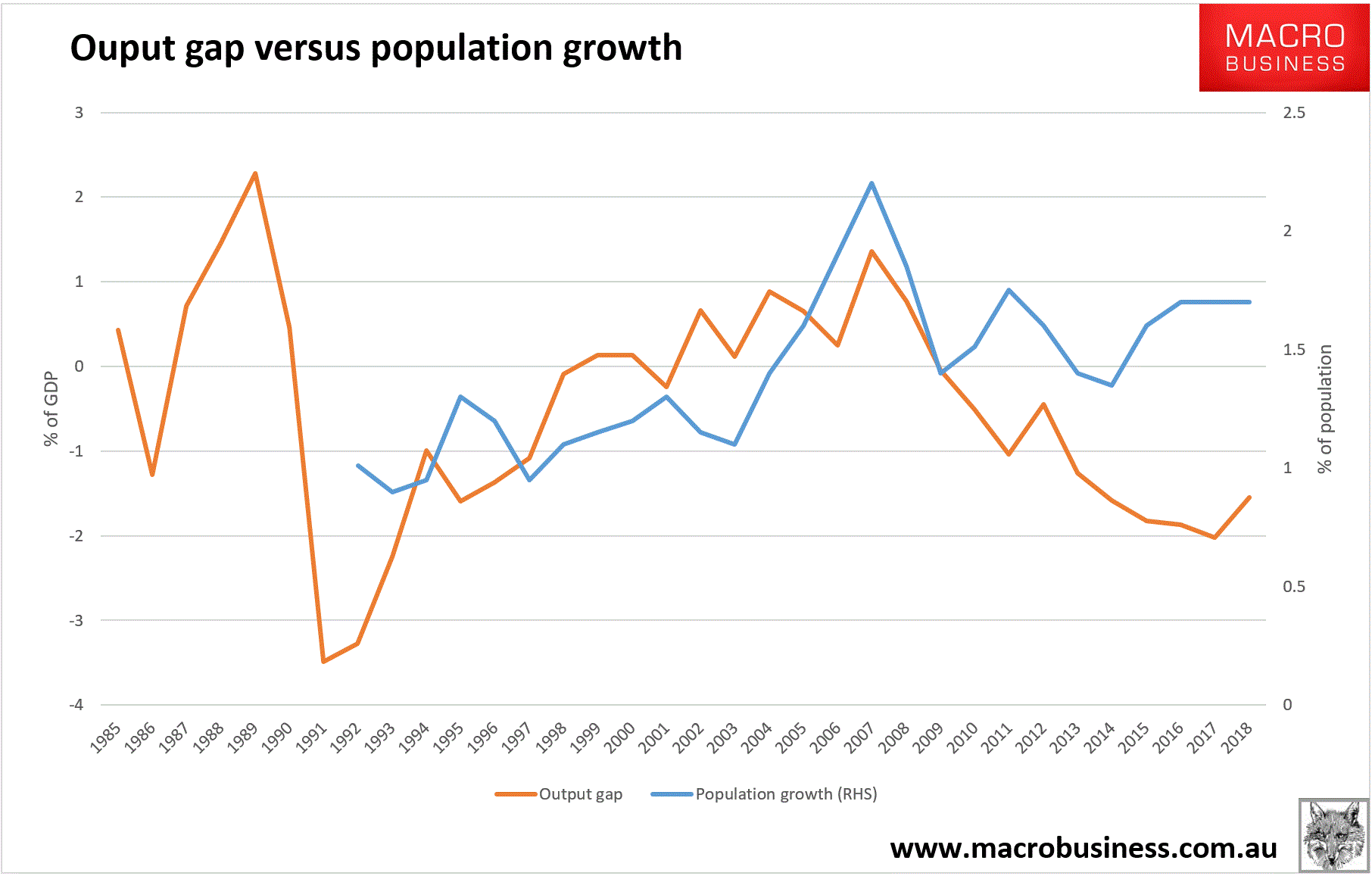Via Peter Martin today:
As recently as 2012, just six years ago, wages were growing like they usually had, at a touch under 4 per cent per year. The rapid dive meant that by June 2014, two years later, they were growing at 2.4 per cent, the lowest rate since the last recession, and a good deal less than the lows plumbed during the global financial crisis.
Another two years later they were growing at just 2 per cent; even less than in the early 1990s recession, and on the face of it, the least since the Great Depression in the 1930s.
Yet we weren’t in a depression, or even in recession. And we kept buying houses and other things as if wage growth would recover. It needs to recover to make those home loans and car loans manageable.
…Why should wage growth have dropped so suddenly, when the unemployment rate is little different to what it was back when it was high?
The first thing to note is that we are not alone. It’s been a shift throughout the developed world, with Japan getting in early. Improved communications have made competition from cheaper workers overseas a potent threat. Also, unions no longer have the bargaining power that they used to.
…The way Dr Lowe sees it, a small number of Australian firms are investing massively in the technology needed to do things more cheaply. A much greater number are not, and are having to fight off brutal price competition. The only way they can do it is to hold the line against wage increases, even at the cost of missing out on good staff.
Added to this might be what US economist Paul Krugman calls the scarring effect of the global financial crisis. He says employers discovered during the crisis that they couldn’t cut wages, even though they needed to. It wasn’t socially acceptable. It taught them that “extended periods in which you would cut wages if you could are a lot more likely than they used to believe”.
OK, so these are no doubt having an impact. There’s also the gig economy. And, most importantly, the terms of trade correction, which is not over and is still weighing on national income. Australian wages would be weaker today than in the past for all of these reasons.
But not this weak. Not the weakest since the Great Depression. That is the result of another structural change which, like MB and China, nobody is allowed to mention: mass immigration.
You can’t address weak wages growth without questioning the role of population growth into today’s economy, such as it is.
The simple fact is, never in Australian modern history has Australia run a mass immigration program into a period of huge economic slack. As the mining and housing booms have peaked together, capacity utilisation in the Australian economy has fallen away, meaning there is abundant supply of everything. Another way to describe this is “the output gap”, the deficit between actual and potential GDP.
The Australian output gap is currently the worst since the 1990s boom and bust and much more chronic. Yet we are still running mass immigration into this slack, including huge unutilised labour resources. When you put the two together on a chart, weak wages make perfect sense:

This is it, the smoking gun of weak wages growth. We have always before adjusted immigration down when there was too much slack in the economy but this time we have ramped it up. To expect anything other than weak wages in this macro set-up is to yell at a brick wall and expect it to answer.
Why we have done so is pretty straight forward. The political economy is corrupt. Instead of managing the economy in the national interest, it now desperately seeks to prop up asset values at the expense of everything else. Population growth today is not about nation building. It is simply an attempt to back-fill the housing bubble.
That’s why he RBA won’t mention it.
That’s the why the government won’t change it.
That why Peter Martin lies about it to protect Domainfax realty listings.
The astute among you will notice that with peak debt at hand, and no new mining boom coming, the ruthless class war can only but fail.

